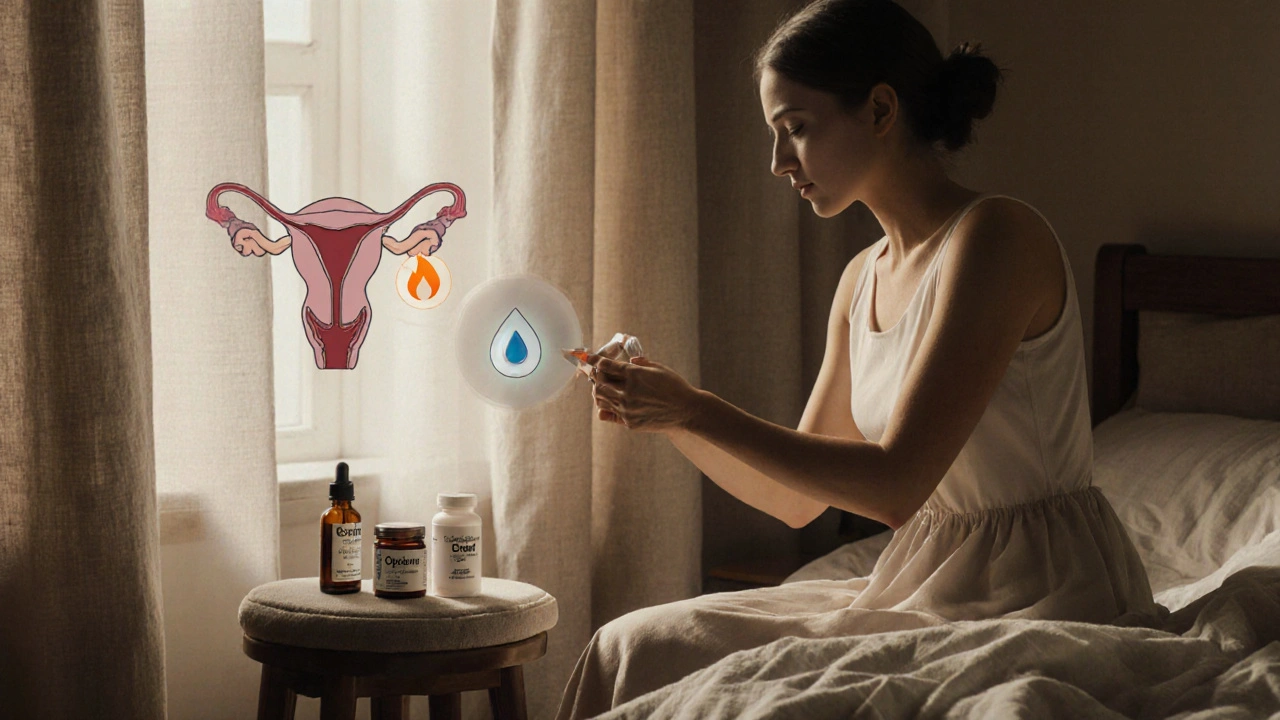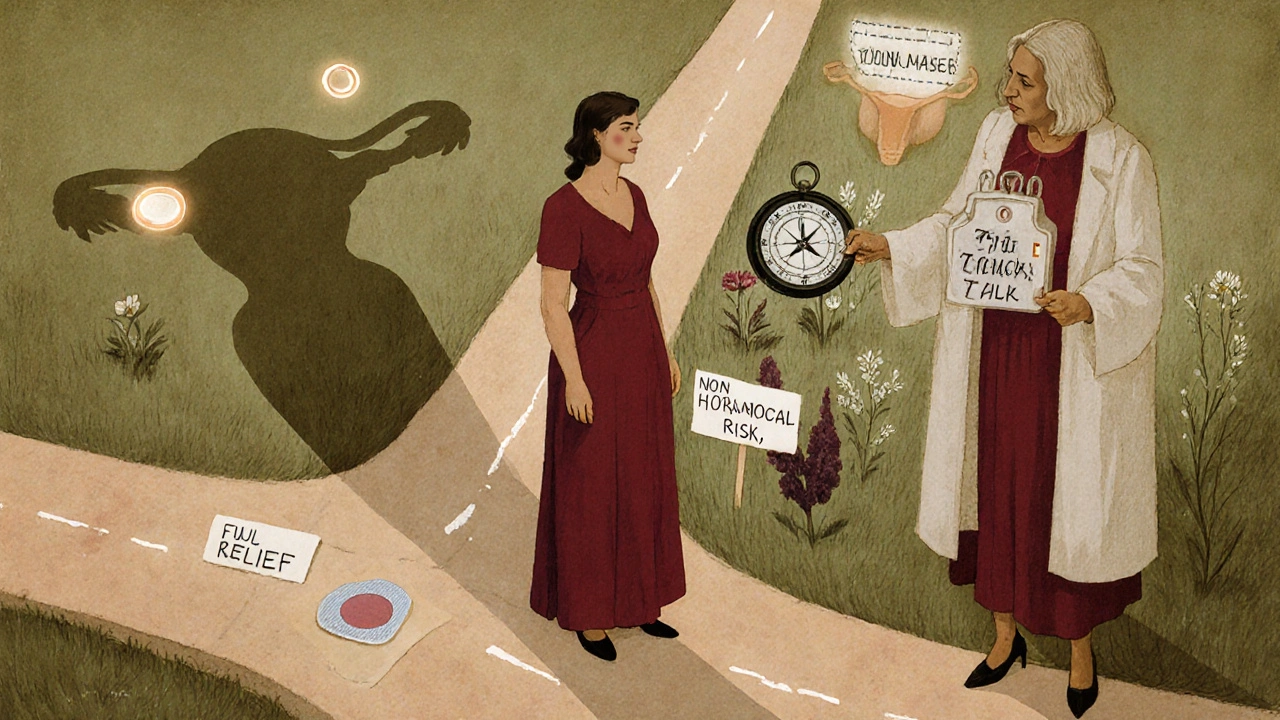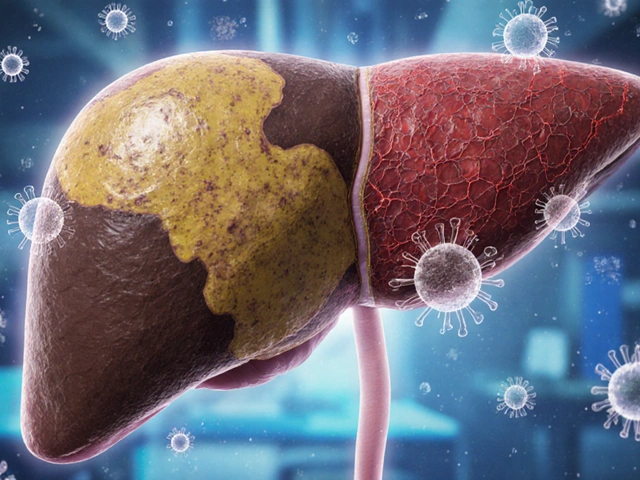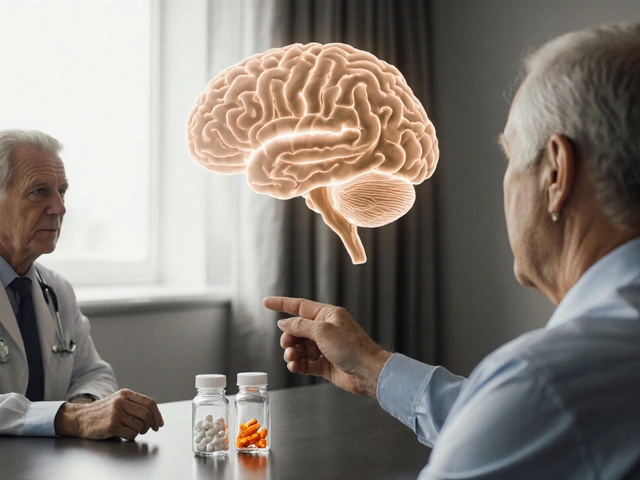When women start noticing dry skin, hot flashes, or vaginal discomfort during perimenopause or after menopause, they often turn to hormone therapy. Estriol is one of the three main estrogens the body makes - and it’s become a popular choice for those seeking gentler relief. But is it the best option? And what are the real alternatives that work just as well - or better - with fewer side effects?
What is Estriol and How Does It Work?
Estriol is a weak estrogen, naturally produced in large amounts during pregnancy. Outside of pregnancy, the body makes very little of it. Unlike estradiol - the strongest and most dominant estrogen - estriol binds weakly to estrogen receptors. This makes it less likely to overstimulate tissues like the breast or uterus, which is why many doctors recommend it for women with a history of estrogen-sensitive conditions or those who want a milder approach.
It’s most commonly used in low-dose vaginal creams, suppositories, or tablets to treat atrophic vaginitis, urinary urgency, and painful intercourse. Oral estriol is available in some countries but not FDA-approved in the U.S. for systemic use. Most users report relief from dryness and irritation within 2-4 weeks, with minimal systemic absorption when used locally.
Why People Look for Estriol Alternatives
Even though estriol is gentle, it’s not perfect. Some women don’t get enough relief. Others worry about long-term safety data. A few find that estriol doesn’t help with hot flashes or sleep issues - common symptoms that stronger estrogens often fix. That’s when people start asking: What else is out there?
There are three main categories of alternatives: other bioidentical estrogens, synthetic hormones, and non-hormonal options. Each has different strengths, risks, and use cases. Choosing the right one depends on your symptoms, medical history, and personal goals.
Alternative 1: Estradiol - The Gold Standard
Estradiol is the most potent and naturally dominant estrogen in premenopausal women. It’s available in pills, patches, gels, sprays, and vaginal rings. Unlike estriol, estradiol effectively treats hot flashes, night sweats, mood swings, and bone loss - not just vaginal symptoms.
Studies show that low-dose estradiol (0.5-1 mg daily) reduces hot flashes by 75-85% in most women. It also helps maintain bone density and may improve skin elasticity and cognitive function. But because it’s stronger, it carries a slightly higher risk of breast cancer and blood clots compared to estriol - especially when taken orally.
For women who need full-spectrum relief and have no history of estrogen-sensitive cancers, estradiol remains the most effective option. Vaginal estradiol rings (like Estring) deliver just enough to fix local symptoms without raising blood levels significantly, making them a safer choice than oral forms.
Alternative 2: Estrogen-Progesterone Combination Therapy
If you still have a uterus, any estrogen therapy - including estriol - must be paired with progesterone to prevent endometrial hyperplasia and cancer. Many women don’t realize this. Estriol alone isn’t enough.
Combination therapies like Prempro (estradiol + medroxyprogesterone) or bioidentical estradiol + micronized progesterone (Prometrium) are common. The bioidentical version is preferred by many because micronized progesterone has fewer side effects than synthetic progestins. It’s less likely to cause bloating, mood swings, or headaches.
For women using estriol vaginally, systemic progesterone isn’t always needed - unless they’re also taking oral estriol or have a history of uterine issues. Always check with your provider. Skipping progesterone when it’s needed is a dangerous oversight.

Alternative 3: Non-Hormonal Options for Vaginal Dryness
Not everyone wants hormones. That’s where non-hormonal treatments come in. These include:
- Hydroxyethylcellulose-based lubricants (like Replens or Hyaluronic Acid gels): These mimic natural moisture and last longer than water-based lubes. They’re safe for daily use and don’t interfere with hormone levels.
- Osphena (ospemifene): A non-estrogen pill approved by the FDA to treat painful intercourse. It acts like estrogen on vaginal tissue but doesn’t affect breast or uterine tissue. Side effects include hot flashes and muscle spasms.
- Vaginal laser therapy (MonaLisa Touch, FemiLift): These use fractional CO2 or erbium lasers to stimulate collagen production in the vaginal wall. Studies show improvement in dryness and urinary symptoms after 3 sessions. Results last 6-12 months. Not covered by insurance and costs $1,000-$2,000 per course.
Non-hormonal options are great for women who can’t use estrogen due to breast cancer history, blood clot risk, or personal preference. But they don’t fix systemic symptoms like hot flashes or bone loss. They’re targeted - not comprehensive.
Alternative 4: Plant-Based and Herbal Supplements
Many women turn to soy isoflavones, black cohosh, red clover, or dong quai. These contain phytoestrogens - plant compounds that weakly mimic estrogen. Some studies show modest relief from hot flashes, especially in women who consume soy regularly from childhood.
But here’s the catch: the evidence is mixed. A 2023 Cochrane review found that black cohosh provided no more benefit than placebo for hot flashes. Soy isoflavones showed a small reduction - about 20% fewer episodes - but only in women taking at least 54 mg daily for 12 weeks. And there’s no long-term safety data.
Herbs aren’t regulated like drugs. One bottle of black cohosh might have 10 times more active ingredient than another. Some interact with thyroid meds or blood thinners. If you’re going this route, choose third-party tested brands like USP-verified or NSF-certified products.
Comparing Estriol to Its Top Alternatives
| Option | Best For | Systemic Relief | Vaginal Relief | Side Effects | Regulatory Status (U.S.) |
|---|---|---|---|---|---|
| Estriol | Mild vaginal dryness, sensitive users | No | Yes | Minimal | Not FDA-approved for oral use |
| Estradiol (vaginal) | Severe vaginal atrophy, systemic symptoms | Yes (if systemic) | Excellent | Low with local use | FDA-approved |
| Estradiol (oral/patch) | Hot flashes, bone protection | Excellent | Moderate | Higher risk of clots, breast cancer | FDA-approved |
| Osphena (ospemifene) | Painful sex, no estrogen use | No | Yes | Hot flashes, muscle cramps | FDA-approved |
| Hydroxyethylcellulose gels | Non-hormonal moisture | No | Moderate | Very low | OTC, no approval needed |
| Soy isoflavones | Mild hot flashes, plant-based preference | Mild | No | Variable, possible thyroid interaction | Supplement, not regulated |

Who Should Use Estriol - and Who Should Avoid It?
Estriol is ideal if:
- Your main issue is vaginal dryness or urinary discomfort
- You’ve had breast cancer or are at high risk
- You’re sensitive to stronger hormones
- You prefer a low-dose, targeted approach
Avoid estriol if:
- You have frequent hot flashes or night sweats
- You need help with bone density or mood
- You’re taking oral estriol without progesterone (if you have a uterus)
- You’re looking for long-term systemic protection
It’s not a cure-all. It’s a tool - and like any tool, it works best in the right hands.
How to Decide What’s Right for You
Start with your symptoms. Write them down. Are they only vaginal? Or do you also have trouble sleeping, brain fog, or joint pain? Then consider your health history. Have you had blood clots? Breast cancer? Liver disease? These matter.
Ask your doctor for a simple blood test to check your estradiol and FSH levels. That gives you a baseline. Then ask: What’s the lowest effective dose that fixes my main problem?
Many women start with a vaginal estriol cream for 4-6 weeks. If symptoms improve but other issues remain, they add a low-dose estradiol patch. Others skip hormones entirely and try a lubricant plus pelvic floor therapy.
There’s no one-size-fits-all. But there is a best choice - for you.
What to Watch Out For
Even gentle treatments carry risks if misused.
- Overuse of vaginal estriol: Using more than 1 gram daily long-term can raise estrogen levels enough to increase cancer risk. Stick to the lowest dose that works.
- Buying estriol online: Many websites sell unregulated estriol creams. They may contain unknown doses or contaminants. Always get it from a licensed pharmacy or compounding clinic with a prescription.
- Ignoring progesterone: If you have a uterus, estrogen without progesterone = endometrial cancer risk. This isn’t a myth - it’s documented in over 20 clinical studies.
- Waiting too long: Vaginal tissue thins over time. The longer you wait to treat dryness, the harder it is to reverse. Early intervention works better.
Don’t let fear stop you from treating symptoms. But do let knowledge guide your choices.
Is estriol safer than other estrogens?
Estriol is weaker than estradiol, so it’s less likely to overstimulate breast or uterine tissue. This makes it safer for women with a history of estrogen-sensitive cancers or those who want minimal systemic effects. But safety depends on dose and delivery. Vaginal estriol is much safer than oral forms. Always use the lowest effective dose under medical supervision.
Can I use estriol if I’ve had breast cancer?
Many oncologists approve low-dose vaginal estriol for breast cancer survivors with severe vaginal atrophy. A 2022 study in the Journal of Clinical Oncology found no increased recurrence risk in women using vaginal estriol for up to 3 years. But never start without your oncologist’s approval. Systemic estrogen is still contraindicated.
Does estriol help with hot flashes?
Not reliably. Estriol has minimal systemic activity, so it doesn’t significantly reduce hot flashes or night sweats. If those are your main concerns, estradiol (patch or gel) or non-hormonal options like gabapentin or paroxetine are more effective.
How long does it take for estriol to work?
For vaginal symptoms, most women notice improvement in 2-4 weeks. Full results - including reduced urinary frequency or pain during sex - often take 6-8 weeks. Don’t stop too soon. Consistency matters more than dose.
Can I buy estriol over the counter?
No. Estriol is a prescription medication in the U.S. Any product sold as "estriol cream" without a prescription is unregulated and potentially unsafe. Compounded estriol must be prescribed by a licensed provider and made by a certified pharmacy. Avoid online vendors claiming to sell "natural" or "bio-identical" estriol without a script.
Do I need progesterone with estriol?
If you still have your uterus and are using oral estriol, yes - you need progesterone to protect your uterine lining. If you’re using estriol only vaginally and not taking it orally, progesterone is usually not required unless you have a history of endometrial issues. Always confirm with your doctor.
Next Steps
Don’t guess. Test. Track. Talk.
Start by listing your top three symptoms. Then schedule a visit with a menopause specialist or gynecologist who understands hormone therapy. Bring your questions. Ask about blood tests. Ask about alternatives. Ask what the risks really are - not just the ones you read online.
The goal isn’t to find the strongest hormone. It’s to find the right one - the one that gives you back your comfort, confidence, and quality of life without adding new problems.





